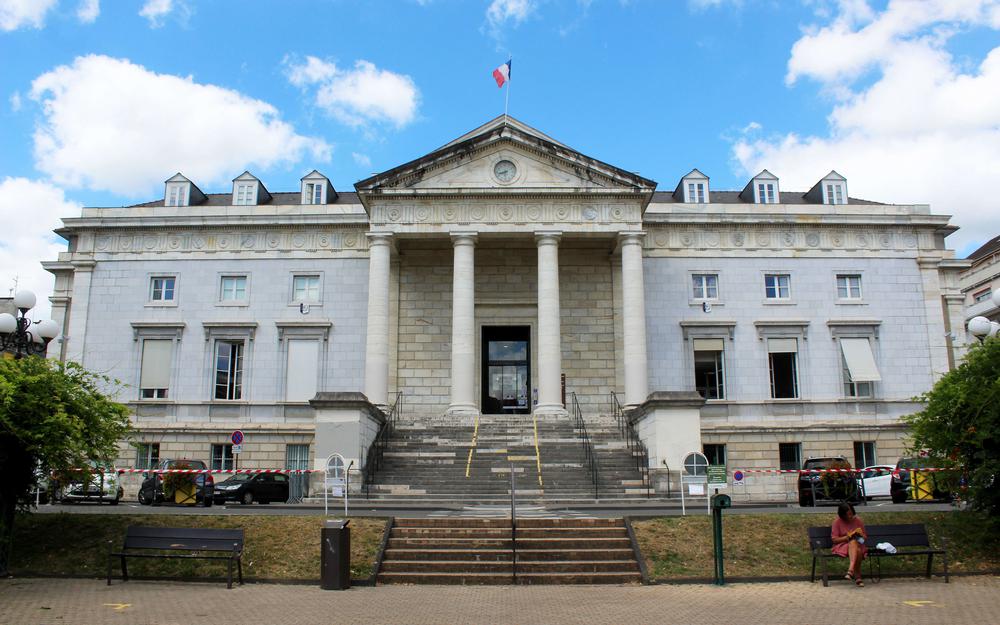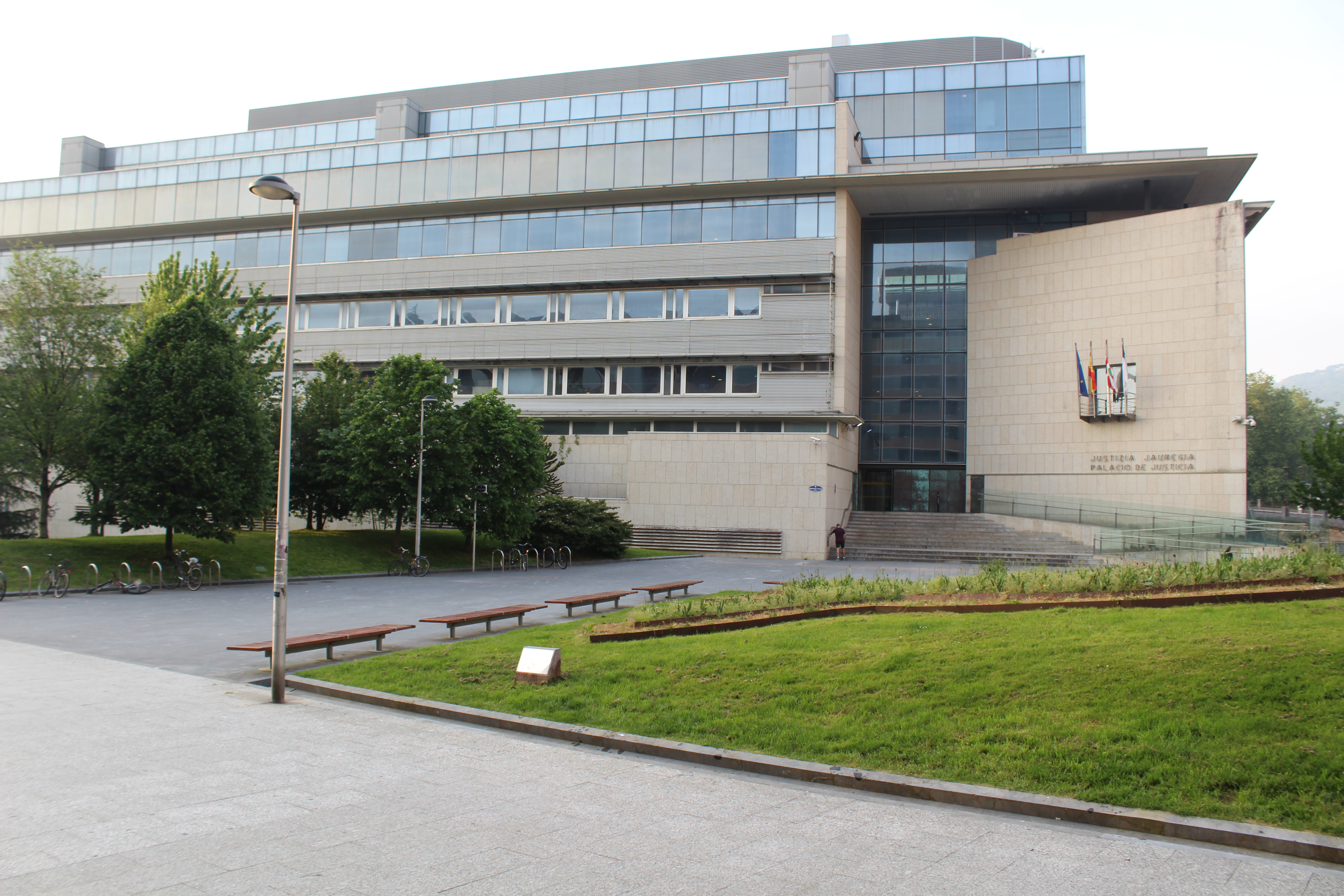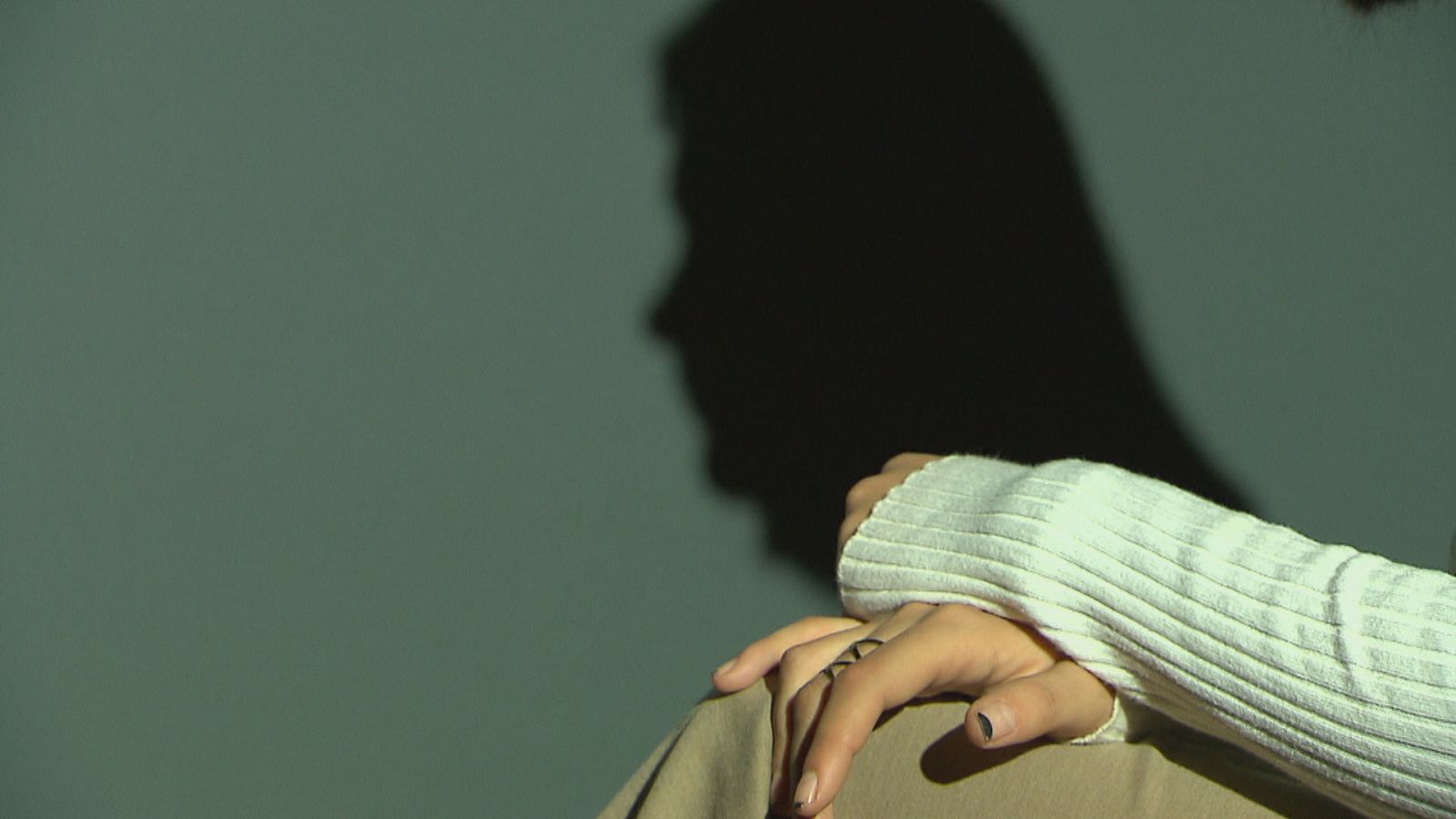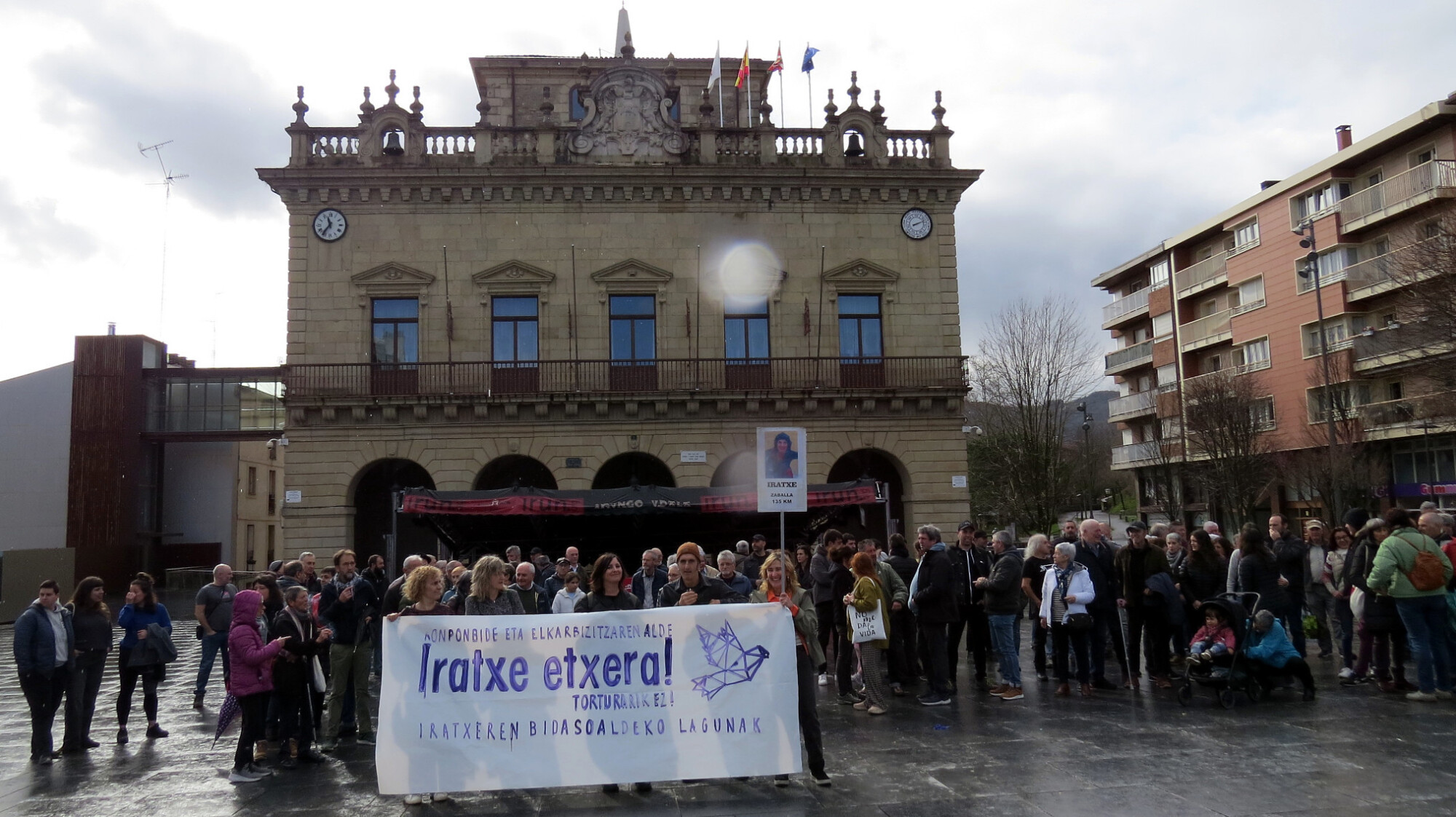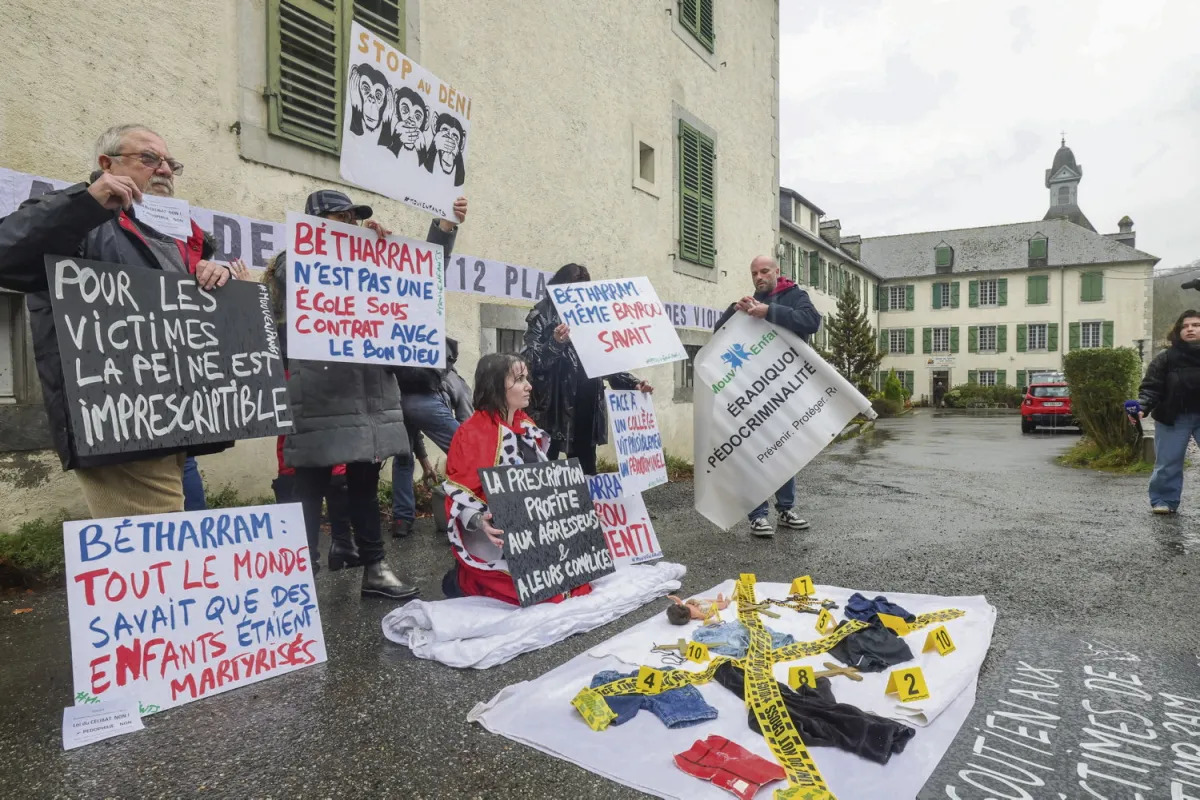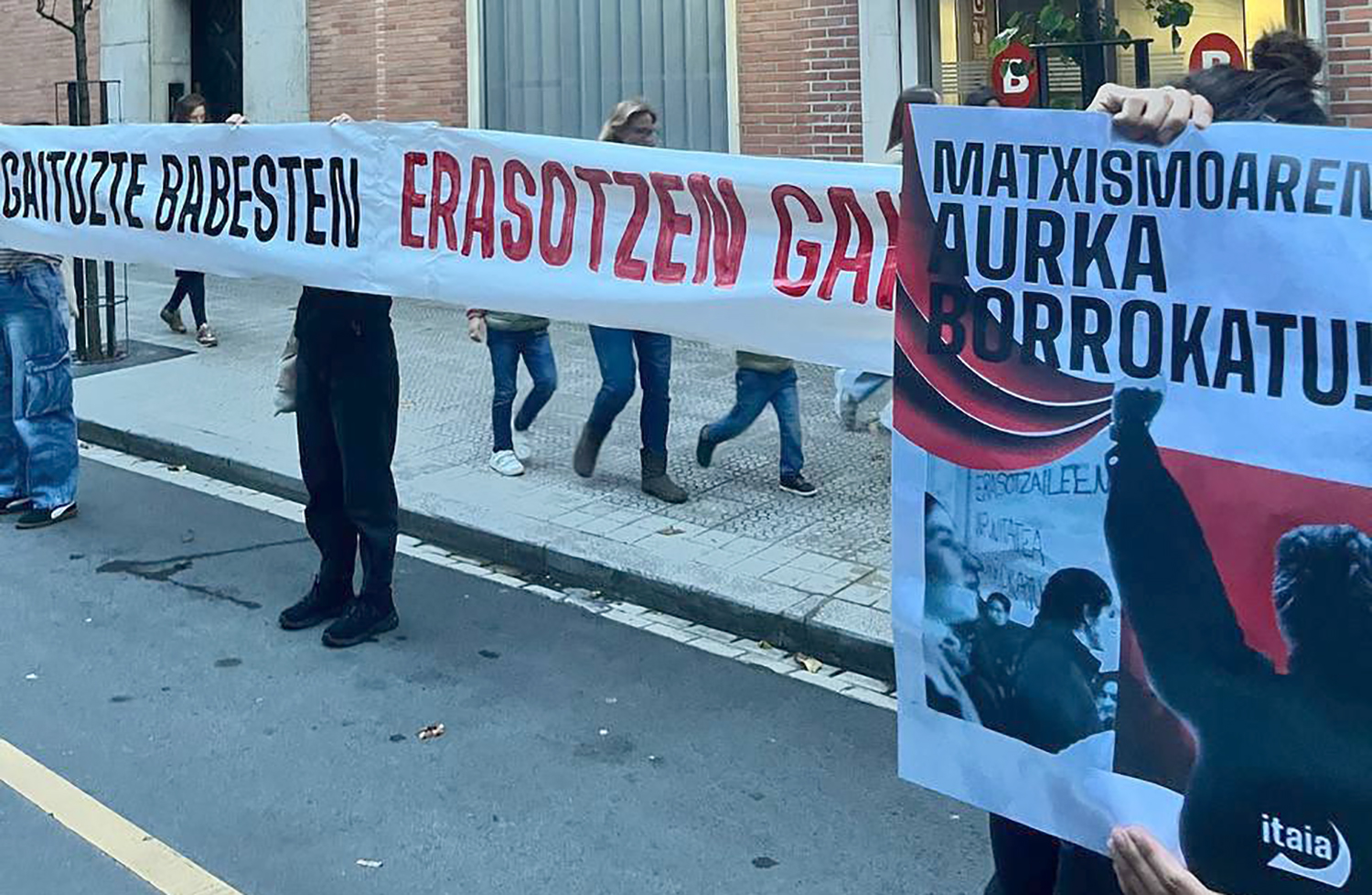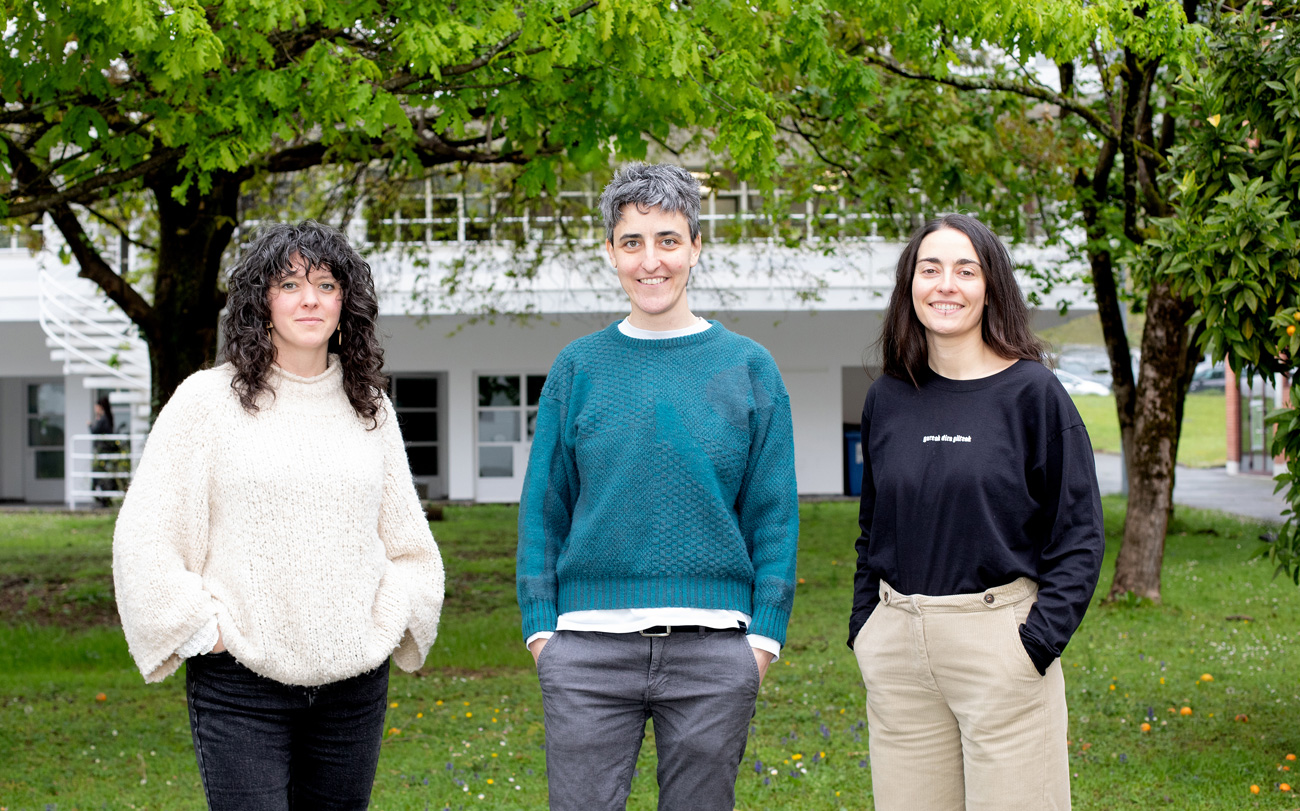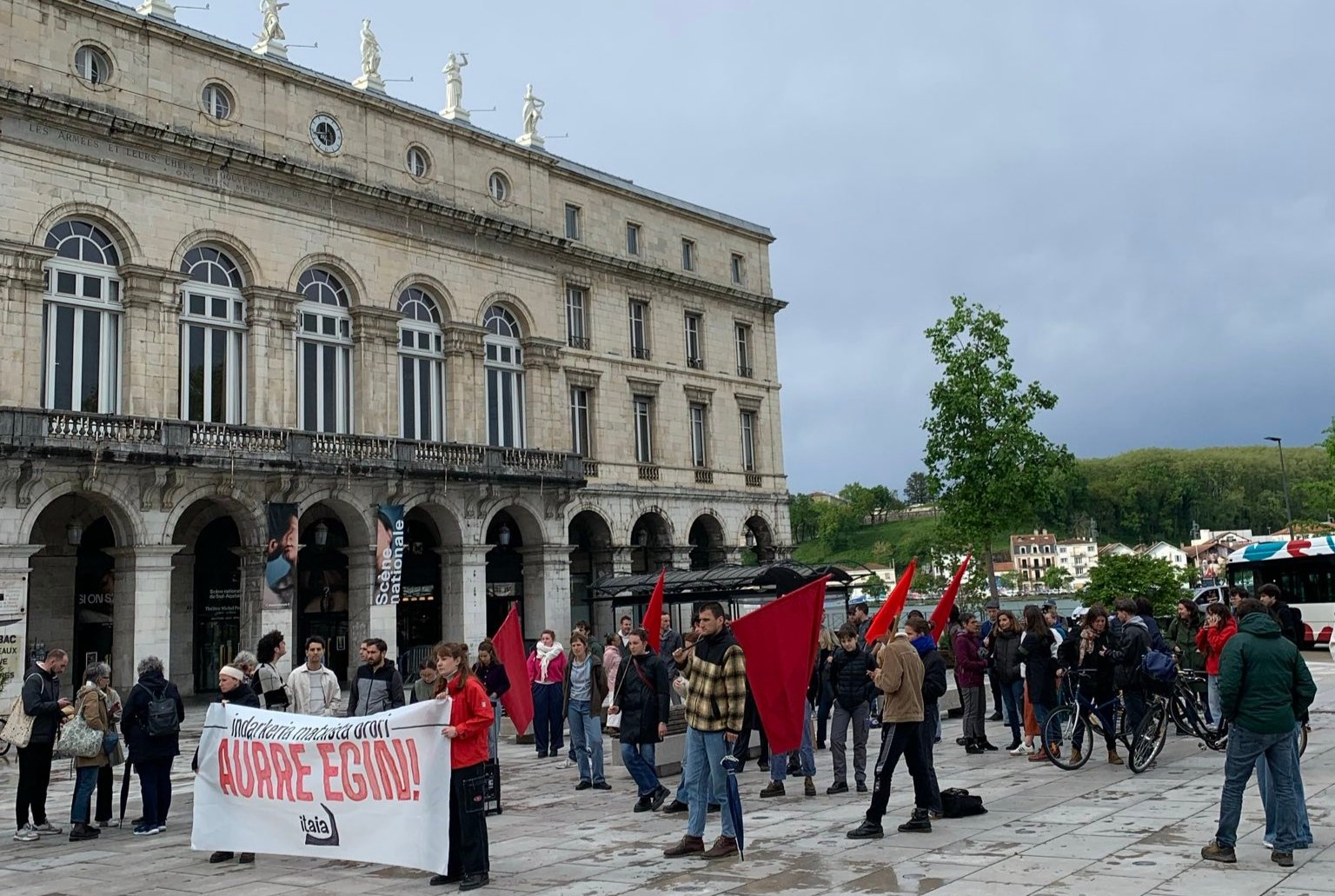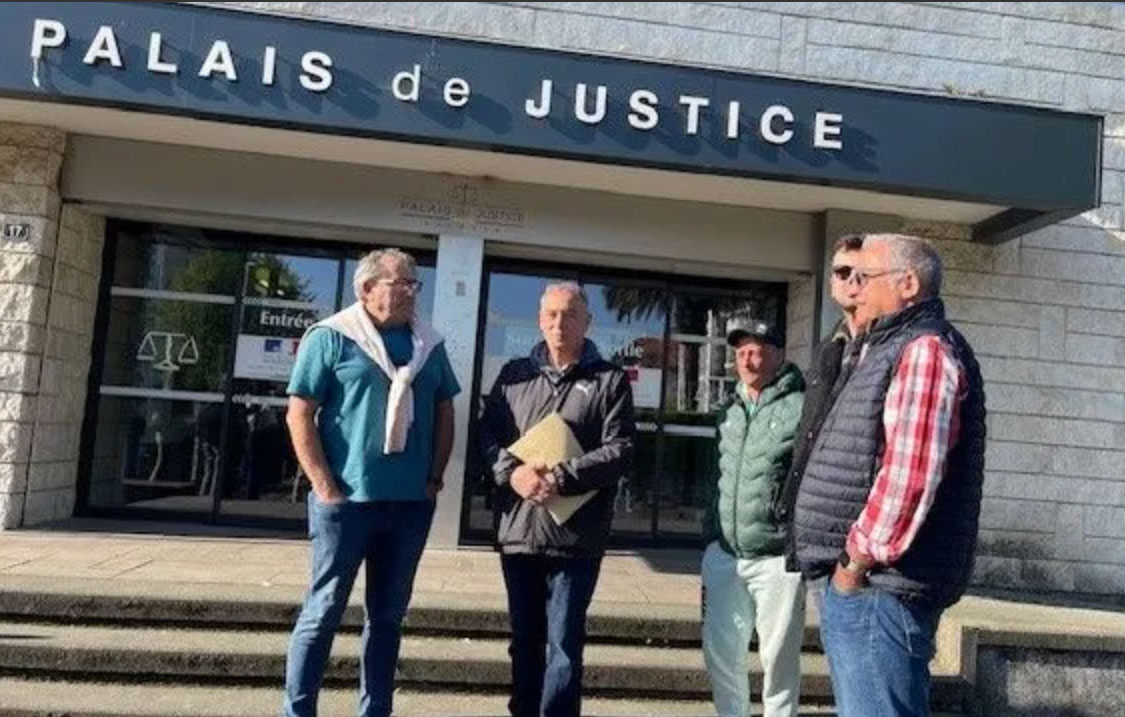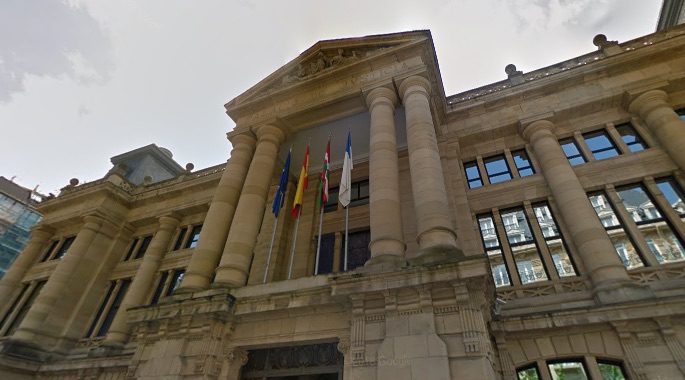The lights and shadows of the judicial process
- In order to strengthen the tendency to report cases of male violence, messages can be found here and there that underscore the importance of reporting. Likewise, very little is known about the judicial process that takes place once the complaint is lodged, and this lack of knowledge can cause collateral damage to the complainant. The way to carry out research and the process in this regard is as important as denouncing the aggressions. In order to lodge a complaint, it is essential to look at the lights and shadows that the judicial system has in relation to male violence.
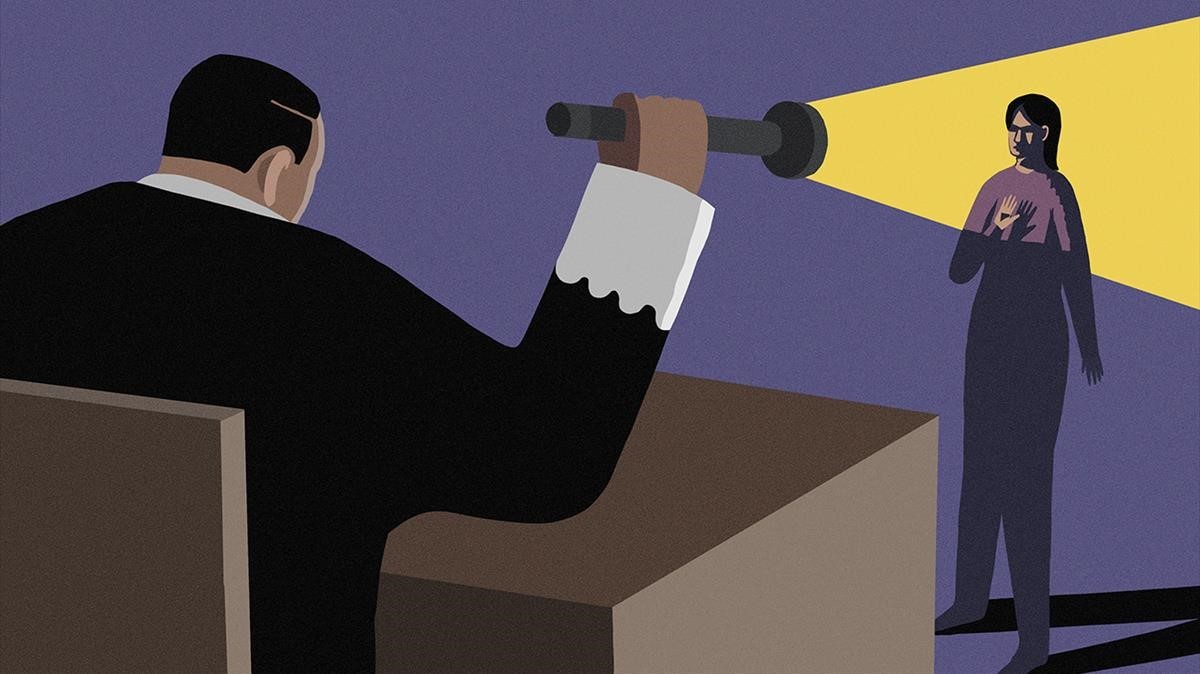
There is not so much talk of the importance of denouncing the Machian aggressions as of the process followed in a complaint, and it is possible that many have internalized the idea that the individual who has been attacked with the complaint is protected. However, the reality is very different and the emotions and sensations that women who have denounced male violence* in the judicial process tend to be far from the sense of protection, such as re-victimization, permanent questioning or taking responsibility for the fact. Most of the testimonies collected in the report of the Association for Human Rights Argituz published in 2013 indicate that “inadequate treatment, lack of information or insufficient empathy” has been received. Data and statistics show that these emotions and feelings are a reliable reflection of reality.
Feminicidio.net In the analyses conducted by the General Council of the Judiciary of the Spanish State with 2016 statistical data on gender violence, we see that in Hego Euskal Herria there is work to improve the care and judicial protection of women who have suffered gender violence. What is more, Bizkaia is among the territories that worst serve women victims of violence, which means that in them the risk of disprotection and revictimization of women increases. As for the denial of the complaints filed, the territory also stands out, where 16.91% reject the demand, against 5.74% of Gipuzkoa, 1.36% of Álava and 9.32% of Navarra, and where it is possible that the inadequate application of justice and revictimization have influenced this. Above and beyond Bizkaia, however, the trend towards the decline in complaints has generally shifted towards the downward trend, although in contrast, the trend towards the filing of complaints has increased. In the CAV, 38.58% of the complaints were filed, while in Navarra 41.28%. The lack of justification for the commission of the crime is, in most cases, the cause of their filing. Regarding the complaints that impose the penalty on the aggressor, 30.63% in the CAV and 20.77% in Navarra.
As for removal orders and protective measures, the CAPV also highlights in an incorrect way, as orders and orders are assigned only to 8% of complaints and 49.54% of requests, and here too Bizkaia is imposed above Navarra, Gipuzkoa and Álava: 19.12%, 0.28%, 0.69% and 0.00%, respectively, are the number of removal orders and unaccepted disorders of both.
Another aspect that draws attention in the data is the overrepresentation of foreign women: 39.58% of the complainants are in Bizkaia, 24.41% in Gipuzkoa, 50.84% in Álava and 32.55% in Navarra. In figures, the analysis places Álava and Bizkaia among the territories that do not take relevant account of foreign women who suffer gender-based violence. Maguette Mbeugou, the penultimate woman murdered by male violence in Euskal Herria, is a clear exponent of this, as while writing these lines, male violence has murdered another woman in Pamplona. Mbeugou filed a complaint against the partner who killed her and rejected the protective measures she had requested. “Maguette faced both the machist violence of the patriarchal system and the institutional violence of this colonial and racist system,” denounced the Women’s World March of Euskal Herria.
Three of the seven women killed this year in Euskal Herria – Mbeugou, Roxan and Yolanda – filed complaints against their partners and murderers
Three of the seven women killed this year in Euskal Herria – Mbeugou, Roxan and Yolanda – filed complaints against their partners and murderers. The former Biscayan couple of the victim, who was also denied the removal order, was also interposed against the man who killed his two daughters in Castejón (Spain). These allegations highlight the need to reflect on what has failed in the task of protecting and ensuring the lives of these women and girls.
(1).jpg)
Complaint: only one tool
According to Miren Ortubay Fuentes, a PhD in Criminal Law and a professor at the UPV/EHU, having the complaint as an objective can be harmful, as it is another tool available to women who have suffered violence. In a monograph for the Critical Thinking of 2015, he states that “in the absence of imminent risks, the affected person must be carefully ‘prepared’ to denounce, seeking assholes and means of self-protection, since the aggressor is not always imprisoned immediately, nor does the woman go to a reception center”. The complaint can reinforce the aggressor's offensive and increase the risk of the woman, and in the most extreme cases give rise to a femicide. It is therefore appropriate that, if circumstances allow, space should be given to the front. “Women cannot be induced to report without information,” he says.
See Ortubay Fuentes (Doctor of Criminal Law): “Women cannot be encouraged to report without information”
Attorney Ana López agrees with Ortubay that: “We, from the Commission against the Aggressions to Women of the Women’s House of Donostia, of which you are a part, see very much needed to know what the woman is going to have before entering the police station.” As he explains, there is a false impression that everything is being done with going to the police station and making a complaint, and he has stressed the need to look for the means to make it known that this is not the case. "It's not convenient to get into the police station without being clear about what you want. Once inside you don’t know how you’re going to leave,” he says. It warns that without denouncing it is possible to get entangled in the process: “The woman can tell the Ertzaintza of certain facts, be perceived by the agent as possible crimes and have the obligation to bring them to the attention of the court. At that moment, the woman is in the maze of the process,” she says.
The importance of the budget
In order to avoid collateral damage, it is best for the complaint to be made after a persecution. In Ortubay’s view, the whistleblower should know “where he enters, which is not going to be easy and will need psychological protection”. The report on the Evaluation of Judicial Remedies and Legal Assistance, published by Emakunde in 2007, clearly states: It is necessary to “be informed before, during and after the judicial process”. The potential for success of the judicial process can be reinforced by two aspects: 1) what the process is and 2) what it can offer to the complainant.
The judicial process begins with a complaint in the police station, and to take this step you can be served by an attorney. The day after the complaint was lodged, the court has to declare the case. In the event that the alleged act is a sexual assault, the case shall be referred to an investigating tribunal. If the aggression has been committed by your partner or former partner, you will go to the Violence Court on Women in the capitals and to the Local Examining Court. As can be understood, the case can be conducted by a specialized or investigating court, which can significantly affect the process. In addition to the fact that courts specializing in violence against women have less workload than those of education, in these cases “empathy and the way to question the judge with whom the violence has occurred is different,” says López.
Stays in the Court tend to extend over time and the woman may have to wait in a room until the time of the declaration. "Because if the defendant has not been arrested, he may be in the courthouse hall," López explained, stressing that in these cases the courts do not have adequate space for women. “The woman enters a small room and the man stays in the large waiting room,” he said.
Once before the judge, both the complainant and the defendant, in the identified cases, have to declare and the judge file the case or decide to proceed with the criminal procedure, as well as establish or not the order of removal. López explained that the removal order has not been given and that the complaint can be continued, as when the woman has no evidence to report psychological violence. However, it has warned that the process is most likely to be closed on the same day, by means of a rapid procedure. “If you are complaining that you have been beaten and taken by the medical side, even if after the coup you hide more violence, the process can end on the same day if the aggressor acknowledges the facts and the penalty that is due to him,” he explained. This path streamlines the process, but can “encourage impunity for more serious attacks”, according to Ortubay.
.jpg)
“Justice does not make gender distinctions, judges do,” he
says in a
Twitter message that accompanies the image.
Ortubay also referred to the importance of being clear about what the criminal justice system is and what it can offer to those who have lodged the complaint. Without wishing to call into question the need for complaints, he pointed out that the criminal system "is nothing more than the machinery for imposing sanctions". In this sense, he pointed out that "women's interests often do not coincide with what justice offers". Many women seek to extricate themselves from the violent relationship, not punish the aggressor”. The punitive nature of the criminal system may surprise one and lead him to propose the suspension of proceedings in this scenario. At that time, “the system gets angry” with women for denouncing today and for not wanting to declare tomorrow,” he warned. This undoubtedly has a negative impact on the process.
Dark areas of the process
Having clarified what the process is and what it can offer, it is appropriate to bring to light the dark points of the judicial route. On the one hand, there are difficulties in demonstrating many expressions of male violence, especially when there are no physical marks. “The criminal justice system has to judge the concrete facts in order to be able to punish them (…) and women are interested in the extent to which they can provide evidence,” says Ortubay. He explained that, given the difficulty of accumulating evidence to prove the facts that occur in privacy, many cases are filed without penalty. On the other hand, there is institutional violence, which was collected in 1993 by the UN General Assembly as “physical, sexual and psychological violence carried out and accepted by a State”. This violence occurs, among others, in the following subtle ways and can make the judicial process hard:
The chauvinist nature of justice. Ortubay says in no uncertain terms what has lately been repeated several times in the street: “Justice is patriarchal, like society.” An article recently published in the journal Galde says: “The lack of awareness in this group – which refers to the judiciary – about the ignorance of feminist contributions and theories is true. Ignorance and even contempt. In other areas, judges know that they do not know and accept expert advice.” But he says it's not the same with feminism.
Misogynic stereotypes. This machista character causes judges to often have stereotypes of women and that what stands out, according to Ortubay, is that of the “embustera woman”. As a result, “the judge begins to suspect that the woman is not telling the truth or to judge it directly.” These stereotypes are clearly detrimental to the women who have denounced, because when questioning their word they are re-victimized, which can induce them, among other things, not to continue the process. As if that were not enough, there is a tendency to detect these abandoned allegations as “false allegations”. In addition, Ortubay points out that these stereotypes have extended mistrust towards women in the judiciary, accusing of the proliferation of denial of restraining orders and the murders of women who had been asked for protection.
(1).jpg)
In addition to institutional violence, there is an increasingly frequent phenomenon: cross-reporting by aggressors against women. In the absence of the violence used to dominate the couple and the tendency to distinguish between that used as resistance, contrasts occur in the courts. This strategy of the aggressors can therefore oppose the measures being taken to protect women from sexist violence.
Need for alternatives
Faced with this situation, Ortubay considers that “outside the criminal system alternatives are needed that can offer support to women, empower women and make available real resources. So that the criminal system is not the only answer or the main one.” In his view, the mistake lies in placing so much emphasis on the criminal system. López agrees with him, who considers the Women's Houses important. “Spaces of this kind are vital and in those feminist movements,” he says.
At the Andretxea Women's House in Eibar there is an alternative that has been working for eight years: Women's Square Association (Emakumeak Ber Bi Euskaraz) which offers support, companionship, guidance and empathy to women who suffer or have suffered machist violence, made up of women who have suffered violence in their day. Based on their experiences, they see a need for the woman in the process of leaving the circle of violence to be supported by others who have gone through the same process. As they explained, they once felt the need to ensure the phrase that was repeated to them from the institutions: “You’re going to get out of here.”
If a woman needs it, she is cared for and explained the procedure to follow in the future. However, the main function of the association is to economically assist women in economically precarious situations to undertake training in the empowerment school, in order to contribute to their empowerment. In addition, women who approach the association also intend to invite them to do weekend therapy. They were very helpful. “There they made us see that one has the responsibility of one’s own life and that the decision is in their hands,” one of them says. They have stated that their observation made them capable of transforming the situation in which they were in.
Women's Squared Association: “We have to live with the GI, we can’t get out of the CAV, we have to show what we spend the money on, and we have to go to the food bank. We live on parole and don’t deserve it.”
Looking back, you have pointed out that in the judicial process you had a very bad time, even outside the courts. One of his colleagues says he felt questioned “especially among the people”. Not only that, but they have put on the table the horror of moving from “the emotional, economic and absolute dependence of a man to the full dependence of the state” or “to that of his parents”: “We have to live with the RGI (Income Guarantee Income), we cannot leave the CAV, we have to show what we spend the money and we have to go to the food bank. We live on parole and don’t deserve it,” one said.
In spite of the obstacles, the perspective given to them by the time say: “If a woman has survived mistreatment and domination, she has enough strength to get out of them.” It is not an easy road, but it is a little more bearable thanks to the work of such associations.
(2).jpg)
Madrileko (Espainia) Emakumeen aurkako indarkeriaren arloko epaitegiaren inguruetan, auzitegiaren noranzkoa markatuz, seinale matxistak agertu ziren 2016an. “Epaitegi feminazia”, “Salaketa faltsuak”, “Auschwitz feminazia: gizonezkoen birrintzailea” edo “Kriminal prebarikatzaileak” gisako mezuak irakur zitezkeen horietan. Epaitegiko langileek adierazi zutenez, halako ekintzak maiz egiten dituzte, eta bere pribilegioak arriskuan ikusten dituen jendarteko sektore baten izaera matxista adieraztera datoz. Emakumeen gaineko estereotipo misoginoak, baina, biztanleriaren zati baten kontua izatetik urruti, gizartean erroturik daude. Eta era sotilagootan bada ere, epaitegietan ere presente egoten dira, emakumeen babeserako izan beharko luketen legeak hauen kaltetan aplikatzea eraginez.
2023ko abenduan notizietara salto egin zuen Gernika-Lumok: bertako saskibaloi entrenatzailearen kontrako salaketa bat zegoen sexu eraso jarraituak egitearren. Sare Feministaren izenean, zurrunbilo mediatikoan murgildu zen Apraiz.
Donibane Garazi inguruko herri ttipi batean sortua da Bea, eta 1970eko hamarkadan ondoko eskola publiko batean ikusi zituen bortizkeria, sexu eraso eta bortxaketak salatu dizkigu. Irakasleak eragiten zizkiela tratu horiek ama eskolako eta lehen mailako haurrei, mutikoak bortizki... [+]
Prentsaurrekoa eskaini dute ostegun honetan Marc Aillet Baionako apezpikuak, elizbarrutiko hezkuntza katolikoko zuzendari Vincent Destaisek eta Betharramgo biktimen entzuteko egiturako partaideetarikoa den Laurent Bacho apaizak. Hitza hartzera zihoazela, momentua moztu die... [+]
Antifaxismoari buruz idatzi nahiko nuke, hori baita aurten mugimendu feministaren gaia. Alabaina, eskratxea egin diote Martxoaren 8ko bezperan euskal kazetari antifaxista eta profeminista bati.
Gizonak bere lehenengo liburua aurkeztu du Madrilen bi kazetari ospetsuk... [+]
11 adin txikikori sexu erasoak egiteagatik 85 urteko kartzela zigorra galdegin du Gipuzkoako fiskaltzak. Astelehenean hasi da epaiketa eta gutxienez martxoaren 21era arte luzatuko da.











